Most gardeners are quite careful about maintaining optimal soil pH for plants. But it’s easy to forget that fruit trees and vegetable plants need a certain pH level to thrive. The optimal pH for the health and development of every plant species on Earth is unique. Below we learn the USA Soil pH chart for vegetables, fruits, flowers, and herbs, adjusting soil pH for vegetables, increasing and decreasing soil pH, and ideal soil pH values for different crops.
USA soil pH chart
What is meant by soil pH?
Horticultural soils are often classified as either acidic (sour) or alkaline (sweet). Some gardeners need a proper grasp of the meanings of these phrases and terms or how they relate to plant development. Soil pH measures how acidic or alkaline the soil is. The pH scale has a value between 0 and 14. As a rule of thumb, an acidic pH is below 7, whereas an alkaline pH is above 7. Soil with a pH of 7 is considered neutral.
Why is soil pH important?
The pH level is essential because it determines how easily the body can absorb nutrients. Soils with a pH between 6 (slightly acidic) to 7.5 (slightly alkaline) are ideal for growing most horticultural crops (slightly alkaline). Some plants can only thrive on soil with a specific pH range, from 4.5 to 5.5. Azaleas, hydrangeas, and blueberries are all examples of “acid-loving” plants. Elemental sulfur (S) can reduce the soil pH, making it more suitable for these plants.
Applying elemental sulfur and working it into the soil a year before planting is recommended due to the prolonged time it takes for the soil to become more acidic after application. Canadian sphagnum peat can be worked into the soil to reduce acidity.
However, most plant life does not thrive in soil with a pH below 6.0. Soil acidity can be corrected by adding lime to very acidic soils, making the pH level neutral. Ground limestone, mostly calcium carbonate (CaCO3), and dolomitic limestone, which includes CaCO3 and some magnesium carbonate, are both suitable liming materials (MgCO3).
What happens if pH is high in soil?
Soils with a pH greater than nine are classified as very alkaline and often include dangerously high concentrations of bicarbonate, carbonate, aluminum, and iron. The high exchangeable salt content of these soils diminishes soil fertility. Therefore nutrient insufficiency is also likely to be a serious issue.
What happens if soil pH is too low?
The soil’s pH affects not only which minerals are usable by plants but also how those nutrients interact. Many elements are less accessible to plants at low pH, and others, like iron, aluminum, and manganese, are dangerous to plants at low pH levels.
How do you lower the pH of soil?
You should get the soil tested once you have determined the kind of soil and the pH level. Commercial tests are available for purchase at hardware and garden centers, or you can mail a sample to a lab for analysis. The pH of your soil can be estimated, but submitting a sample for analysis can give you a more precise reading. Find out how your water is affecting the soil by conducting water tests. Most houses and gardens rely on groundwater, which is often more alkaline than surface water.
Rainwater, on the other hand, is often more acidic. The soil pH can be somewhat lower in areas with much rainfall. You can have more alkaline soil if you mostly use tap water to irrigate your lawn or garden. Make use of natural substances. Your soil’s pH can be lowered gradually by adding organic matter like pine needles, compost, or composted manure. This, however, is only practical if you want to plant for a very long time. If you want to grow organic food, this is a fantastic choice. Soil drainage and aeration can also be enhanced by adding organic matter.
You may want to try using sulfur. Sulfur can be added gradually to the soil to raise its acidity. Sulfur’s efficacy is affected by various variables, including humidity, temperature, and bacteria. Sulfur’s capacity to reduce soil pH might take many months, depending on several variables. Sulfur can be found at hardware and garden supply shops.
Adding some aluminum sulfate could help. There is an immediate increase in soil acidity after applying this substance, thanks to a chemical reaction involving aluminum. Because of this, starters and small-scale growers often choose aluminum sulfate over organic chemicals or pure sulfur. However, it can be more challenging to regulate soil acidity because of how rapidly it changes the pH of the soil.
Aluminum sulfate can be found at hardware shops and garden centers. Mix the components with the soil and till. The organic chemicals, sulfur, and aluminum sulfate will not be effective unless they are tilled into the soil. The soil pH will determine how often organic substances need to be applied. Before you reapply, check the soil for results. Be careful not to use too much sulfur or aluminum sulfate.
After spraying your plants, water them. You’ll need to use the garden hose to remove any sulfur or aluminum sulfate from your plant leaves. Leaves will be burned, and your plants will suffer if you don’t wash them off. The chemicals will set faster if you water the plants after applying them.
How do you raise the pH of soil?
To raise the pH, test your soil. Powdered limestone, often known as lime, is the most common ingredient used to raise the soil’s pH and can be found at any hardware or gardening shop. Pulverized lime, hydrated lime, granulated lime, and pelletized lime are the four most common forms of standard lime. One of these chemicals could work well, depending on the soil type and moisture level. The soil more readily absorbs lime, pulverized into a fine powder.
The problem is that it can clog the sprayer machine, making spreading more of a chore. Spreading granular or pelletized lime is more efficient. Hydrated lime is water-soluble and can rapidly raise a soil’s pH. Hence it should only be used on highly acidic soils. There are micronutrients in certain types of lime, such as the calcium and magnesium carbonates found in dolomite. Dolomitic lime is beneficial if your soil is low in magnesium. Soils with much magnesium shouldn’t have any more added to them.
Consider using wood ashes. Charred wood is also rather basic and can enrich the soil with essential micronutrients, including calcium, phosphate, potassium, and boron. Limestone is more effective than wood ash. However, its long-term effect on a soil’s pH can be rather significant. When adding wood ash, you must keep an eye on the soil. Stay away from the ash if you have any plants that are in the process of growing or sprouting. In sandy soil, wood ash can be pretty helpful.
The greatest benefits will be achieved if the liming material is tilled into the soil approximately two to three months before planting (often in the autumn or winter). The root zone, the top 7 inches (18 cm) of soil, is where the lime should be tilled in. Those with a small land can spread the lime by hand. Liming material can also be applied to a yard with the help of a spreader.
You can use a rake or a rototiller to add the liming material into the soil. Lime is not highly water-soluble. Thus it is best to plow it into the soil to increase its effectiveness. Regularly watering the soil with essential. For lime to be effective, soils need to be consistently watered. The lime becomes more effective and more easily absorbs into the soil when water is added. Apply water with a sprinkler or garden hose. The soil can lose additional minerals if it is overwatered.
Is 7.5 pH good for a vegetable garden?
Climate has a role in determining the pH of native soil. The typical pH of U.S. soils is between 4.0 (extremely acidic) to 8.5. (very alkaline). Most food crops thrive at a pH between 6.0 and 6.5. However, a pH of 5.5 to 7.5 is appropriate for a healthy food garden. Some crops like acidic soil, such as potatoes and many berries, while others, such as asparagus and cabbage, thrive in near-neutral soil. Below, there is a chart displaying the ideal pH ranges for various common fruits and vegetables.
Within certain parameters, soil pH can be changed simply. When used with compost, mulches, and organic fertilizers, lime or sulfur can lower the pH of acidic or alkaline soil by one to one and a half points over several months. Using lime or sulfur to address excessive pH issues in beds or big containers is simple and efficient. Be careful not to overdo it with either ingredient since doing so can cause root damage in plants.
In case you missed it: How to Grow Chard in the USA: Soil, Propagation, Planting, Care, and Farming Tips
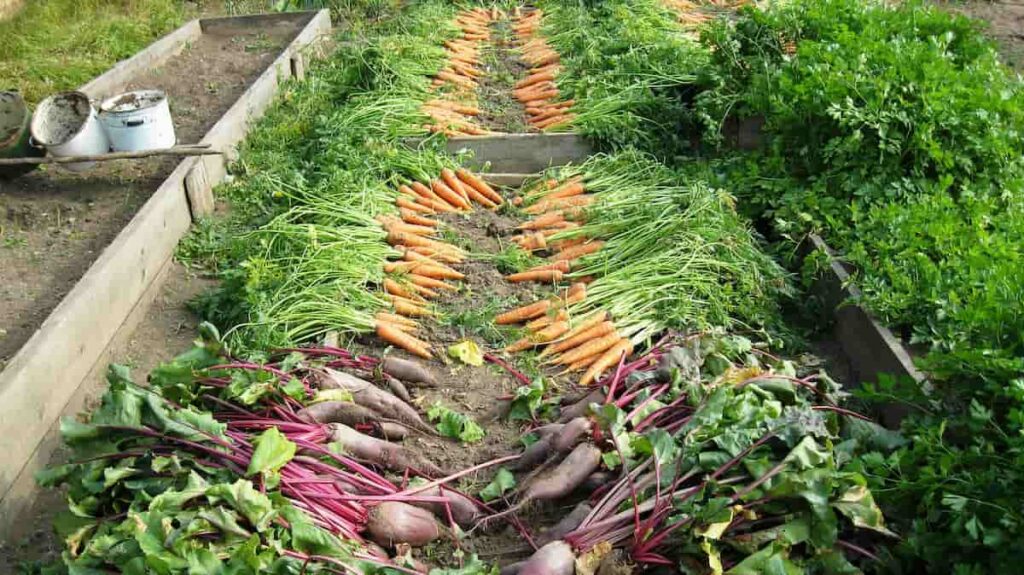
What is the ideal pH for crops?
Some plant nutrients are very pH-dependent in terms of their availability to plants. Soils with a pH between 6.5 and 7.5 are called neutral, representing the “optimal” pH range for soil. Most plant nutrients are bioavailable to plants between a pH of 6.5 and 7.5. E.g., the soil pH for lettuce is between 6 and 7.
The soil pH seems to have less of an effect on the primary plant nutrients nitrogen (N), potassium (K), and sulfur (S), although they are slightly influenced. However, it has a direct effect on phosphorus (P). Phosphate ions react rapidly with calcium (Ca) and magnesium (Mg) to generate less soluble compounds at alkaline pH levels, over pH 7.5, for example. Phosphate ions react with Al and Fe at acidic pH levels to produce less soluble molecules.
What pH do tomatoes prefer?
Tomato plants thrive in locations that get full light most of the day and have good drainage. Soil pH should be on the acidic side (6.2 to 6.8). Plants that get an excessive amount of nitrogen often have healthy leaves but produce fewer fruits. Gardeners without access to soil test findings should apply 2.2 pounds of a complete fertilizer, like 10-10-10 per 100 square feet of garden space, as a rule of thumb. Two weeks before planting, work the fertilizer into the soil.
In case you missed it: How to Start Tomato Farming in the USA: A Step-by-Step Production Guide to Planting to Harvesting
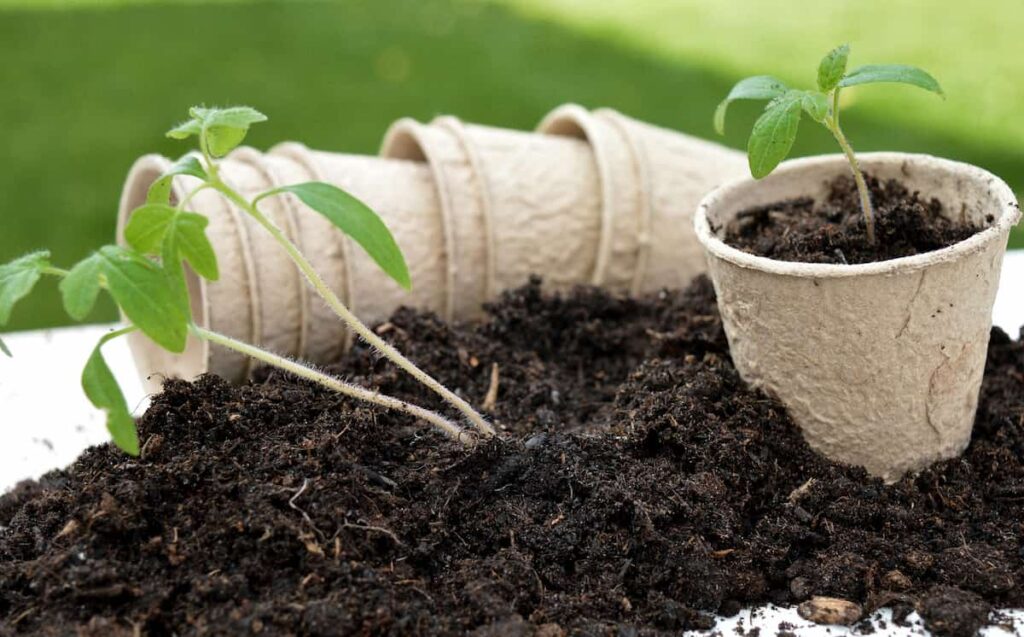
Do potatoes grow better in acid or alkaline soil?
Potatoes can thrive in acidic soils that kill off most other crops. Light, deep, and well-drained sand soils are ideal. They produce better and are less prone to Scab in acidic soil than most other vegetables. Clay soil that is too heavy or alkaline is not a suitable environment for them.
Potatoes aren’t picky eaters, but they do appreciate healthy soil. Deep cultivation, such as double digging, is highly useful for loosening the soil and adding organic matter if the soil is thick or compacted. Too alkaline soil can be corrected by amending it with sulfur, pine needles, or a similar acidifying substance. If you intend to grow potatoes, you should not lime the soil.
What soil pH is best for fruit trees?
Fruit trees thrive in slightly acidic soil with a pH of 6.0 to 7.5. Fruit trees can’t thrive without healthy soil. Structure, water-holding capacity, soil organic matter, permeability, pH, and microbial activity are all indicators of soil quality and pH. Every region has distinct soil, and different crops have different nutritional and chemical needs based on where they’re grown.
What pH do apple trees like?
Apples thrive on soil that is slightly acidic to neutral (pH between 5.8 and 7.0). Soils cause poor tree and fruit growth with extreme pH levels because nutrients get bound up or poisonous. Before planting, acidic soils need to have their pH adjusted by adding lime. Young orchards, which are still developing their root systems, need irrigation on dry soils.
Increase fertigation and trickle watering. Fertigation aids early tree development and puts bearing trees into production sooner in new orchards. Using sprinkler watering is one way to prevent frost damage to tree buds and young fruit. Below we have a fruit pH chart.
What pH do citrus trees like?
Soils with a high pH are harmful to citrus trees (below 5.0). Some plant nutrients, like calcium and magnesium, are lacking in very acidic soils, while others, like aluminum and manganese, are often in excess. Very alkaline soils are not ideal for citrus (pH above 8.0). Soils rich in free lime are also not good because they promote lime-induced chlorosis, which causes the tree to become an unhealthy shade of yellow. Some rootstocks are more prone to chlorosis than others. Below we have a soil pH chart for fruits and vegetables.
Soil pH chart for vegetables in the USA
| Vegetables | Ideal soil pH range |
| Asparagus | 6.0-8.0 |
| Bean, pole | 6.0-7.5 |
| Beet | 6.0-7.5 |
| Broccoli | 6.0-7.0 |
| Brussels sprout | 6.0-7.5 |
| Cabbage | 6.0-7.0 |
| Carrot | 5.5-7.0 |
| Cauliflower | 5.5-7.5 |
| Celery | 5.8-7.0 |
| Chive | 6.0-7.0 |
| Cucumber | 5.5-7.0 |
| Garlic | 5.5-8.0 |
| Kale | 6.0-7.5 |
| Lettuce | 6.0-7.0 |
| Pea, sweet | 6.0-7.5 |
| Pepper, sweet | 5.5-7.0 |
| Potato | 4.8-6.5 |
| Radish | 6.0-7.0 |
| Spinach | 6.0-7.5 |
| Squash, crookneck | 6.0-7.5 |
| Squash, Hubbard | 5.5-7.0 |
| Tomato | 5.5-7.5 |
| Artichoke(globe) | 5.6-6.6 |
| Catnip | 5.0-6.0 |
| Chard | 6.0-7.0 |
| Chili pepper | 5.0-6.0 |
| Eggplant | 5.0-6.0 |
| Gourds | 5.0-6.0 |
| Leek | 5.0-6.0 |
| Okra | 6.0-8.0 |
| Onions | 6.2-6.8 |
| Radish | 6.0-7.0 |
| Rhubarb | 5.0-7.0 |
| Rutabaga | 5.0-7.0 |
| Shallots | 5.0-7.0 |
| Sweet potatoes | 5.0-7.0 |
| Swiss chard | 6.0-7.0 |
| Zucchini | 6.0-7.0 |
In case you missed it: How to Grow Eggplant in USA: Soil, Propagation, Planting, Care, and Farming Tips
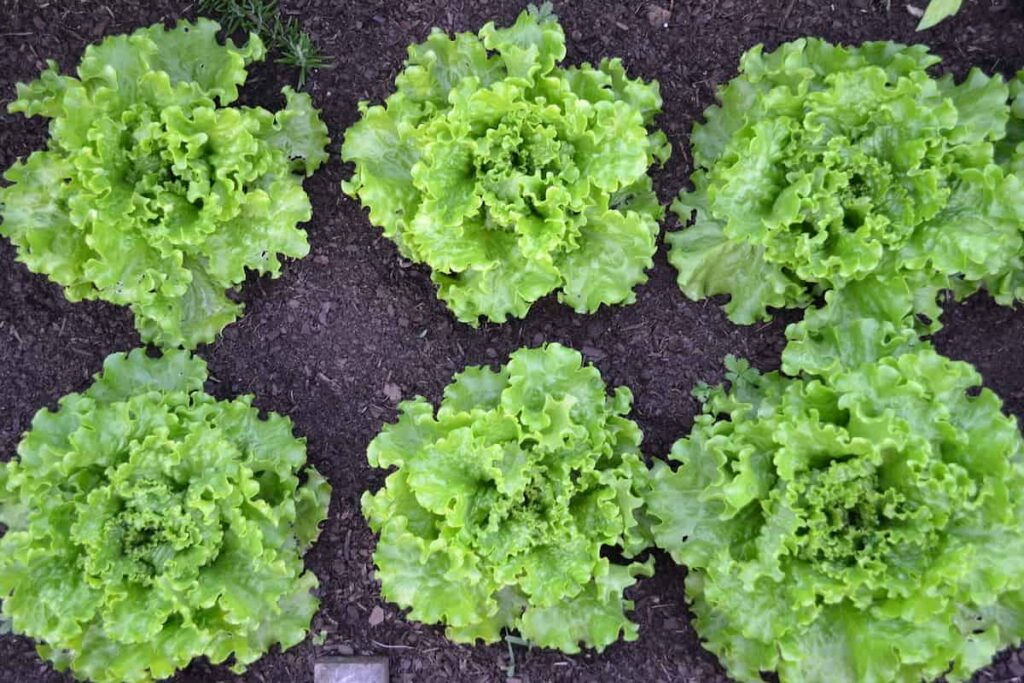
Soil pH chart for flowers in the USA
| Flowers | Ideal soil pH range |
| Alyssum | 6.0-7.5 |
| Aster, New England | 6.0-8.0 |
| Baby’s breath | 6.0-7.0 |
| Bachelor’s button | 6.0-7.5 |
| Bee balm | 6.0-7.5 |
| Begonia | 5.5-7.0 |
| Black-eyed Susan | 5.5-7.0 |
| Bleeding heart | 6.0-7.5 |
| Canna | 6.0-8.0 |
| Cannabis | 5.5-6.5 |
| Carnation | 6.0-7.0 |
| Chrysanthemum | 6.0-7.5 |
| Clematis | 5.5-7.0 |
| Coleus | 6.0-7.0 |
| Coneflower, purple | 5.0-7.5 |
| Cosmos | 5.0-8.0 |
| Crocus | 6.0-8.0 |
| Daffodil | 6.0-6.5 |
| Dahlia | 6.0-7.5 |
| Daisy, Shasta | 6.0-8.0 |
| Daylily | 6.0-8.0 |
| Foxglove | 6.0-7.5 |
| Geranium | 6.0-8.0 |
| Gladiolus | 5.0-7.0 |
| Hibiscus | 6.0-8.0 |
| Hollyhock | 6.0-8.0 |
| Hyacinth | 6.5-7.5 |
| Iris, blue flag | 5.0-7.5 |
| Lily-of-the-valley | 4.5-6.0 |
| Lupine | 5.0-6.5 |
| Marigold | 5.5-7.5 |
| Morning glory | 6.0-7.5 |
| Narcissus, trumpet | 5.5-6.5 |
| Nasturtium | 5.5-7.5 |
| Pansy | 5.5-6.5 |
| Peony | 6.0-7.5 |
| Petunia | 6.0-7.5 |
| Phlox, summer | 6.0-8.0 |
| Poppy, oriental | 6.0-7.5 |
| Rose, hybrid tea | 5.5-7.0 |
| Rose, rugosa | 6.0-7.0 |
| Snapdragon | 5.5-7.0 |
| Sunflower | 6.0-7.5 |
| Tulip | 6.0-7.0 |
| Zinnia | 5.5-7.0 |
| Delphinium | 6.0-7.5 |
In case you missed it: How to Grow Rosemary in USA: Soil, Propagation, Planting, Care, and Farming Tips

Soil pH chart for fruits in the USA
| Fruits | Ideal soil pH range |
| Apple | 5.0-6.5 |
| Blackberry | 5.0-6.0 |
| Blueberry | 4.0-6.0 |
| Chestnut | 5.0-6.5 |
| Crab apple | 6.0-7.5 |
| Lemon | 6.0-7.5 |
| Orange | 6.0-7.5 |
| Peach | 6.0-7.0 |
| Pear | 6.0-7.5 |
| Plum | 6.0-8.0 |
| Pumpkin | 5.5-7.5 |
| Raspberry | 5.5-7.0 |
| Banana | 5.5-7.0 |
| Strawberry | 5.3-6.5 |
| Grapes | 5.5-6.5 |
| Avocado | 6.0-6.5 |
| Watermelon | 6.0-6.8 |
| Pineapple | 4.5-5.6 |
| Cherries | 6.0-7.0 |
| Cantaloupes | 6.0-6.5 |
| Clementine | 6.0–7.0 |
| Mango | 5.5-7.5 |
| Papaya | 6.5-7.0 |
| Persimmons | 6.0-6.5 |
| Cranberry | 4.2-5.5 |
| Coconut | 5.0-8.0 |
In case you missed it: How to Grow Kohlrabi in USA: Soil, Propagation, Planting, Care, and Farming Tips
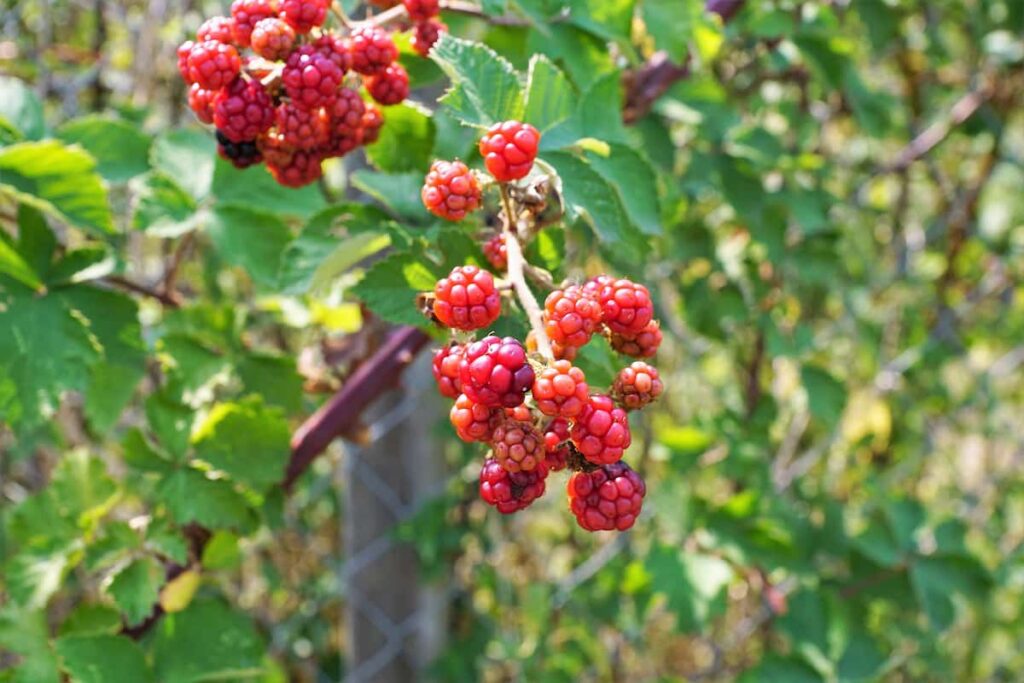
Soil pH chart for herbs in the USA
| Herbs | Ideal soil pH range |
| Basil | 5.5-6.5 |
| Chives | 6.0-7.0 |
| Fennel | 5.0-6.0 |
| Garlic | 5.5-7.5 |
| Ginger | 6.0-8.0 |
| Marjoram | 6.0-8.0 |
| Mint | 7.0-8.0 |
| Parsley | 5.0-7.0 |
| Peppermint | 6.0-7.5 |
| Rosemary | 5.0-6.0 |
| Sage | 5.5-6.5 |
| Spearmint | 5.5-7.5 |
| Stevia | 6.7-7.2 |
| Thyme | 5.5-7.0 |
| Dill | 5.5-6.5 |
| Oregano | 6.5-7.0 |
In case you missed it: How to Grow Spinach in USA: Soil, Propagation, Planting, Care, and Farming Tips
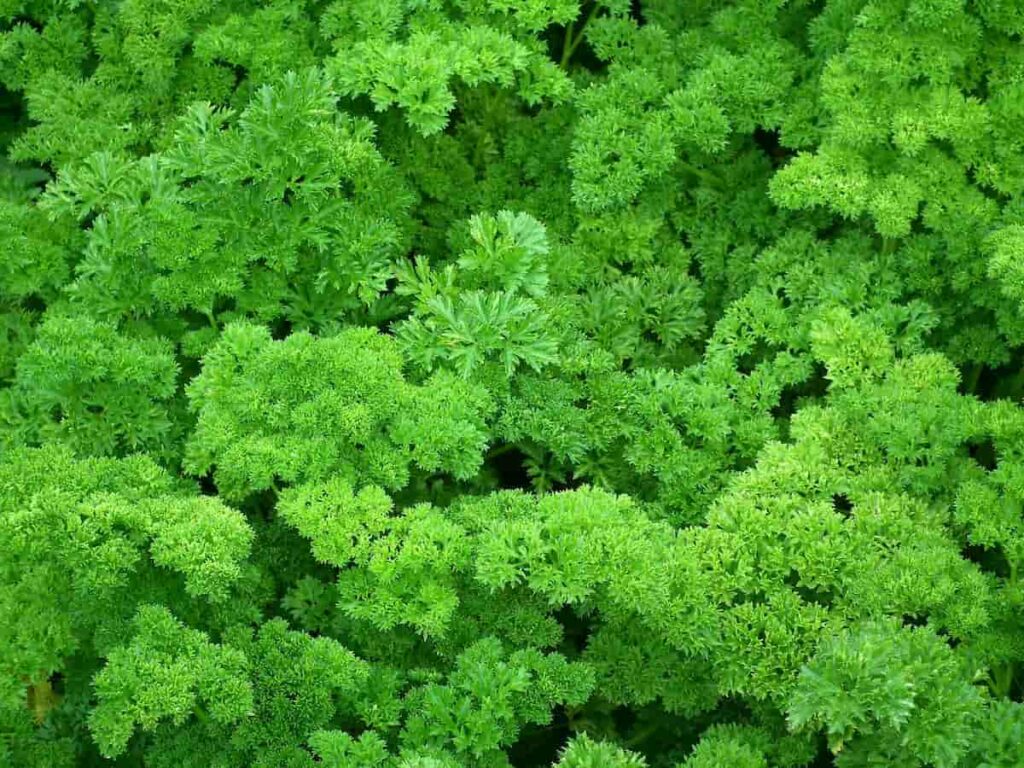
Conclusion
Be sure the pH levels of all your plants are optimal. Test the soil pH if your fruit plant, shrub, or tree is unhealthy or doesn’t produce enough fruit. Simple, user-friendly soil testers can quickly and simply determine whether your soil pH needs adjustment. They are cheap as well.
- Economical Aquaculture: A Guide to Low-Budget Fish Farming
- 15 Common Planting Errors That Can Doom Your Fruit Trees
- How to Make Houseplants Bushy: Effective Tips and Ideas
- Innovative Strategies for Boosting Coconut Pollination and Yield
- Pollination Strategies for Maximum Pumpkin Yield
- The Complete Guide to Chicken Fattening: Strategies for Maximum Growth
- Natural Solutions for Tulip Problems: 100% Effective Remedies for Leaf and Bulb-Related Issues
- Revolutionizing Citrus Preservation: Towards a Healthier, Greener Future
- Natural Solutions for Peony Leaf and Flower Problems: 100% Effective Remedies
- Maximizing Profits with Avocado Contract Farming in India: A Comprehensive Guide
- Natural Solutions for Hydrangea Problems: 100% Effective Remedies for Leaf and Flowers
- The Ultimate Guide to Choosing the Perfect Foliage Friend: Bringing Life Indoors
- From Sunlight to Sustainability: 15 Ways to Use Solar Technology in Agriculture
- The Ultimate Guide to Dong Tao Chicken: Exploring from History to Raising
- The Eco-Friendly Makeover: How to Convert Your Unused Swimming Pool into a Fish Pond
- Mastering the Art of Delaware Chicken Farming: Essentials for Healthy Backyard Flocks
- 20 Best Homemade Fertilizers for Money Plant: DIY Recipes and Application Methods
- How to Craft a Comprehensive Free-Range Chicken Farming Business Plan
- Brighten Your Flock: Raising Easter Egger Chickens for Beauty and Bounty
- How to Optimize Your Poultry Egg Farm Business Plan with These Strategies
- Subsidy for Spirulina Cultivation: How Indian Government Schemes Encouraging Spirulina Farmers
- Ultimate Guide to Raising Dominique Chickens: Breeding, Feeding, Egg-Production, and Care
- Mastering the Art of Raising Jersey Giant Chickens: Care, Feeding, and More
- Ultimate Guide to Raising Legbar Chickens: Breeding, Farming Practices, Diet, Egg-Production
- How to Raise Welsummer Chickens: A Comprehensive Guide for Beginners
- How to Protect Indoor Plants in Winter: A Comprehensive Guide
- Ultimate Guide to Grow Bag Gardening: Tips, Tricks, and Planting Ideas for Urban Gardeners
- Guide to Lotus Cultivation: How to Propagate, Plant, Grow, Care, Cost, and Profit
- Agriculture Drone Subsidy Scheme: Government Kisan Subsidy, License, and How to Apply Online
- Ultimate Guide to Raising Araucana Chickens: Breed Profile, Farming Economics, Diet, and Care
- Bringing Hydroponics to Classroom: Importance, Benefits of Learning for School Students
- Ultimate Guide to Raising Polish Chickens: Breed Profile, Farming Economics, Diet, and Care
- Ultimate Guide to Raising Australorp Chickens: Profile, Farming Economics, Egg Production, Diet, and Care
- Silkie Chicken Farming: Raising Practices, Varieties, Egg Production, Diet, and Care
- Sussex Chicken Farming: Raising Practices, Varieties, Egg Production, Diet and Care
- Homemade Feed Formulations for Livestock: Discover Cost-effective Starter to Finisher Feed Recipes